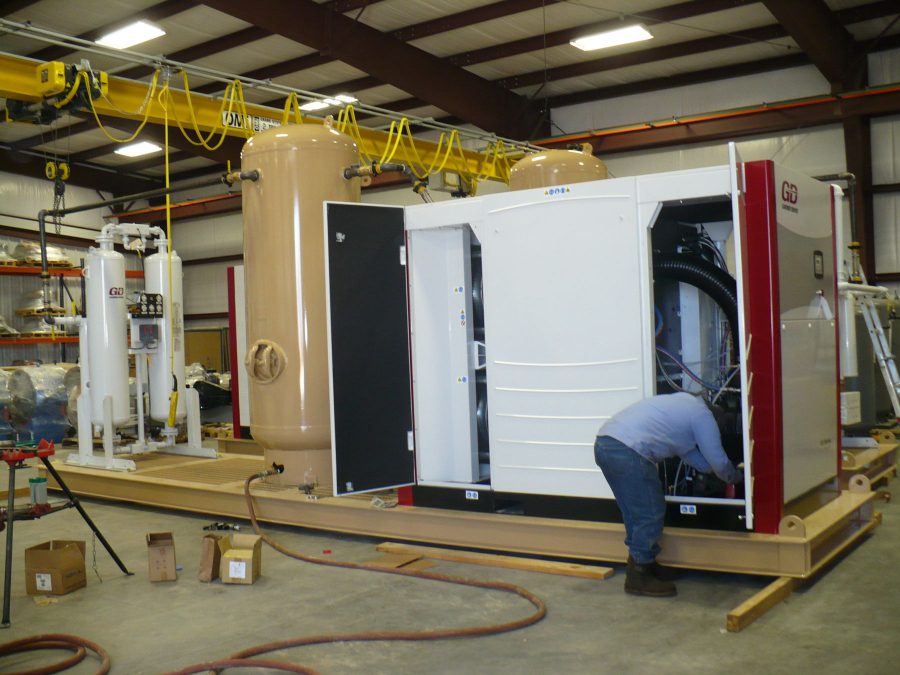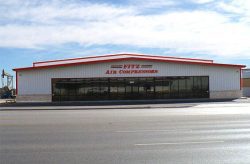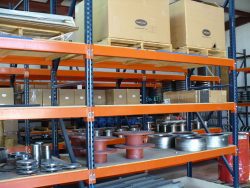Industrial Air Compressor Installation Tips

Selecting the right compressor unit is just the first step in building a high-performing air compressor setup. Proper air compressor installation is vital in maintaining the efficiency and reliability of your air compressor system, decreasing the likelihood of costly repairs and maintenance, and assuring that you get the most out of your investment.
In this blog, we offer our assistance by sharing industrial air compressor installation tips to ensure your compressor is installed correctly to maximize its efficiency.
Ensure Proper Compressor Placement and Design
The first thing to consider during air compressor installation is location. Your air compressor must be installed in a separate plant, central to your entire operation for maximum efficiency, regardless of the industry you belong to. Being in a separate yet central location provides an efficiency of design, improved operating economy, protection against unauthorized access, proper noise control, and more straightforward configurations for improving ventilation.
Provide a Solid Base For Your Air Compressor System
Your air compressor setup should be placed on a flat, solid surface that can provide adequate weight support. Ideally, this surface should have anti-vibration features to ensure the stability of your air compressor unit. This eliminates all possibilities of excess vibrations that can damage your unit.
New, smaller installations typically require a plinth to create a solid base while allowing for the floor to be cleaned. Meanwhile, large piston and centrifugal compressors need a concrete slab foundation anchored to the bedrock or on a solid soil base to eliminate vibrations.
Maintain Sufficient Space Between Compressor Units
Air compressor units must be spaced apart in systems that require multiple compressors. Ample space must be provided to allow airflow and heat exchange between the unit and its surroundings and give enough room for maintenance technicians to work on the units when needed.
Generally speaking, units must have a minimum of three feet of clearance on each side, although spacing requirements can differ between different units. Take note of your compressor’s model and speak to your service professional to know the amount of space needed above and on the sides during servicing.
Install Cable Glands For Electrical Wire Protection
Proper cable management improves plant safety while protecting your air compressor set up from dust buildup and other contaminants. Consider installing cable glands on your air compressor’s electrical wiring systems to secure your equipment through earthing, grounding, insulation, bonding, and strain relief while providing adequate dust protection. This ensures that your equipment is well-protected and easy to maintain, which results in less maintenance and repair costs down the line.
Ensure Proper Ventilation For Your Air Compressor Set Up
Indoor air compressor systems must have adequate ventilation to clear away harmful fumes and improve air quality inside the room. Exhaust air must be vented out of the building away from hazardous and harmful fumes such as gasoline, propane, and paint spray filter outlets. In addition, the ventilation system should be able to turn over the CFM of the entire unit, including the compressor and dryer. You can check the datasheets of your unit to find this information.
Consider the Intake Air of Your Compressor Unit
The quality of the compressor’s intake air can directly impact its performance. Contaminants in the intake air can impair its performance, resulting in increased energy usage, decreased performance, and higher maintenance costs. For instance, dust particles can build up on the unit’s impellers, rotors, valves, and vanes, reducing compressor capacity and increasing the likelihood of equipment breakdown.
Additionally, the inlet air’s temperature can also affect its performance. Cool air is denser, which increases mass flow and pressure capability. Meanwhile, air density decreases at higher temperatures, resulting in reduced mass flow and pressure capability. This reduction in capacity can be fixed by installing additional compressors but also doubles energy usage.
Monitor the compressor’s intake of air. Check the quality of the air, making sure that it is free from solid and gaseous contaminants. If possible, place the inlet where the air quality is as clean as possible. Otherwise, you can use a pre-filter to remove such pollutants. Any resulting pressure drop can and must be addressed during design.
Install an Efficient Air Compressor System with Fitz Equipment
Choosing a quality air compressor is key to securing the performance of your system. However, the quality of the equipment you end up buying won’t matter if it is not installed correctly. For immediate assistance with selecting and installing an industrial air compressor that adequately addresses your needs, you can contact our experts at Fitz Equipment. Just send us a message, and we will be more than happy to assist you with the selection and installation of your equipment.




